|
|
|
2009, Skarabäus- Campaign. Principally Tut-Anckh-Amun´s mask turned into a wearable helmet. The shape has no historical background but signals “egyptian”. The armours worn with it are of less significance for this impression although they take up some design elements. This page belongs to the subject area “egyptians”. The beginning would be here: Egyptians |
|||||
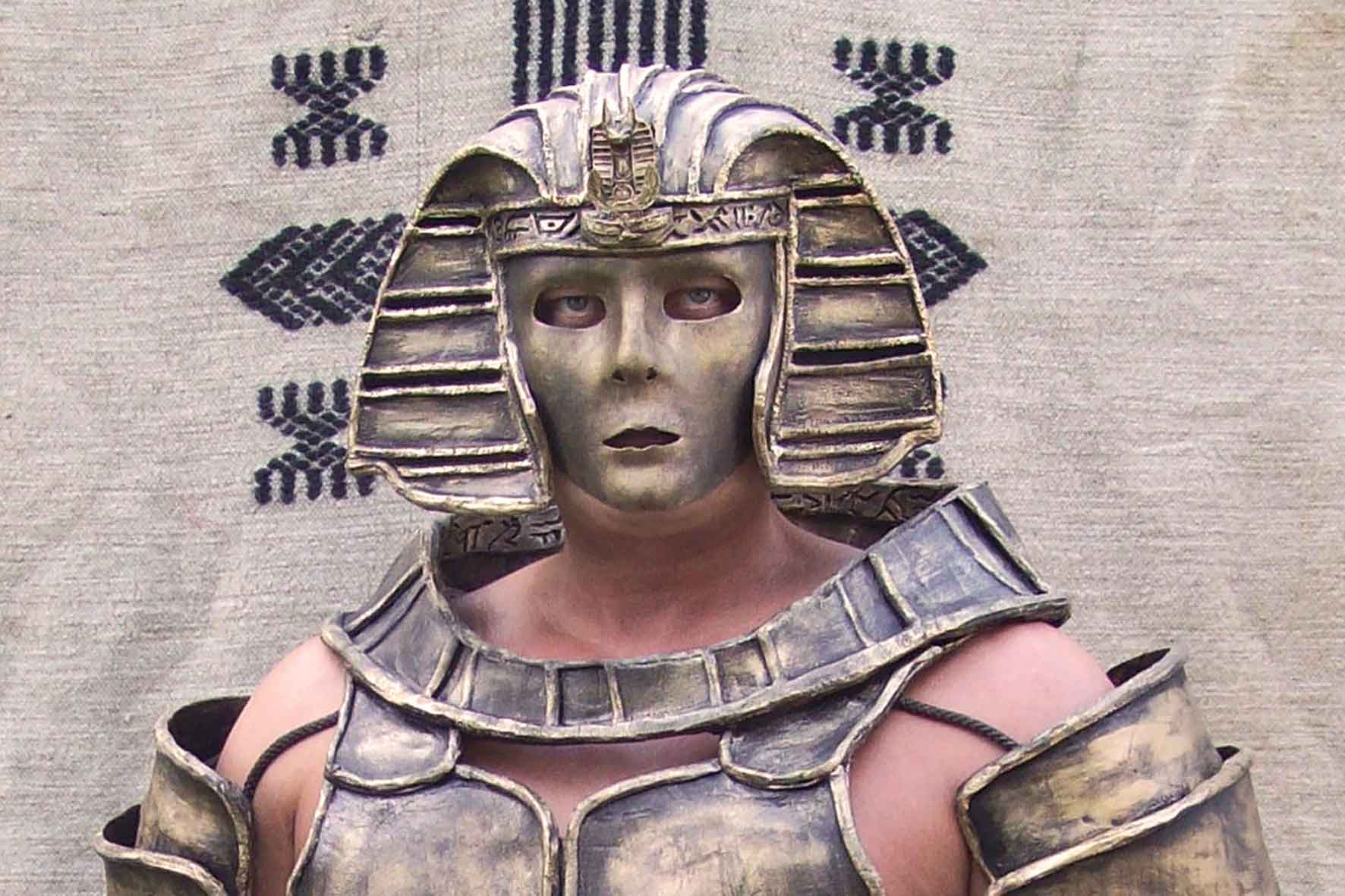 |
|||||
|
Contrary to the first version shown in “light armour” (light armour) this one reaches further down at the sides to create a more coherent impression together with the collar (which proved too high for the new helmet and had to be made over...) |
 |
|||||||||||||
 |
|||||||||||||
|
The helmet´s size should be adjustable 1 or 2 centimetres. This is achieved with velcro tape. Above: I start with the building of an adjustable headband made of foam. Velcro cannot safely be glued to foam, so the velcro parts are sewn onto cloth pieces (above left) which enlarge the contact face and can without problems be glued to the foam if it is lightly sanded before applying Pattex. With this step the head-size is defined and slightly variable (above right). For the building of the helmet only half a tube of Pattex was used. |
|||||||||||||
 |
|||||||||||||
 |
|||||||||||||
|
Above left: This queer- looking piece is defines the width of brow and head. The protrusion on the left is attached to the “brow” of the headband and the u- shaped cutout has to be broad enough for the headband to fit into (btw heads are not round from the overhead angle but oval. Keep trying it on and cutting it out until it fits). Now the “wings” are attached to the outsides of the headband (see above right). Their place on the headband defines the position of the helmet´s side“wings” (in ancient egypt the “nemes”- headdress was behind the ears, with this helmet they are in front of them so the wearer´s ears will be invisible). For the face I use an off-the-shelves venecian carnival mask. Perhaps sometimes I´ll sculpt my own but for now this is what I get. Then the outer rims are cut to shape to define the helmet´s front silhouette. Then the helmet´s lower rim at the back of the head is attached (above right). The strip must be long enough to give an aesthetic curvature (which is a considerably behinfd the head). The mask is now attached to the headband. Ok, that was a complicated explanation- hope what I´m writing here makes any sense to you... |
|||||||||||||
 |
|||||||||||||
 |
|||||||||||||
|
Above left: doesn´t look very cool, does it? But ve haf a plan: Lateral pieces of foam have been glued to the “wings” on the sides to later simulate the “nemes”-headdress- stripes. Please notice the 2 parts in front of the helmet above left: they have been attached to the sides above right: the shape of their hook- like endings defines the final height of the helmet´s brow, took a whole evening to determine and used up a helluva lot of paper templates: Now everything inside the construction with the exception of the headband is cut out. |
|||||||||||||
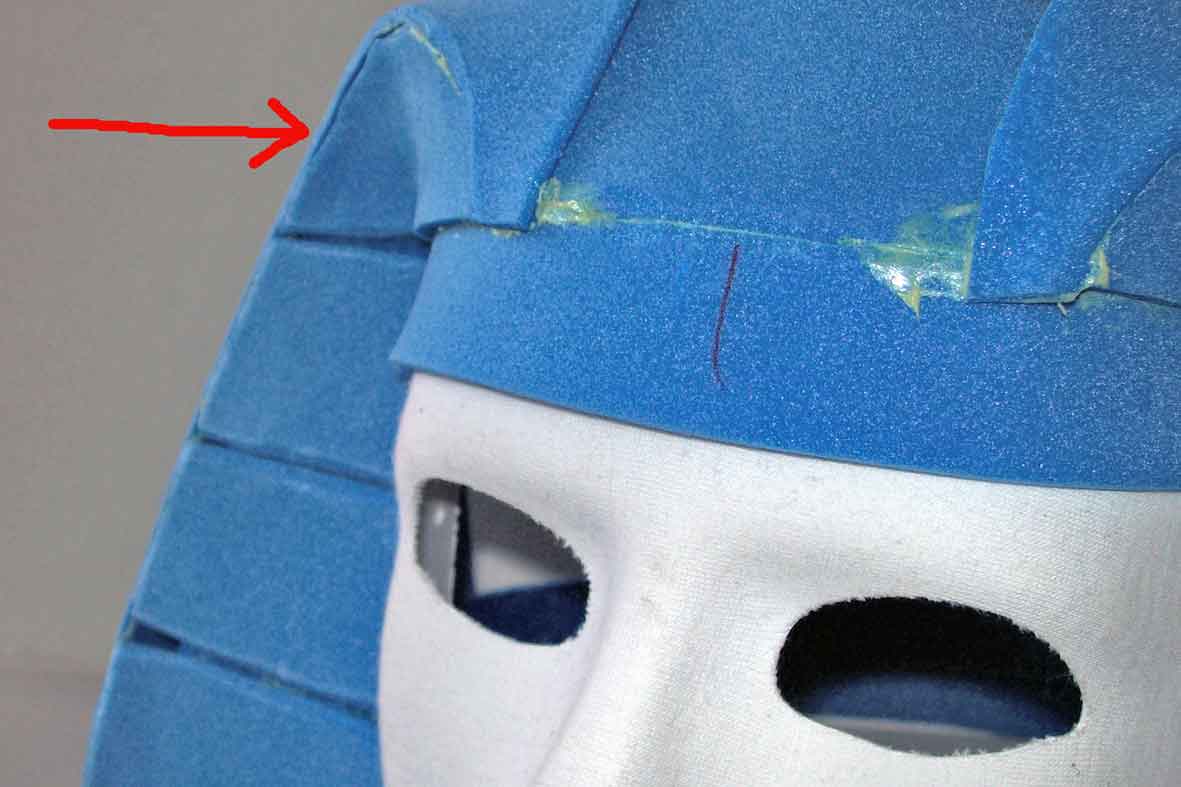 |
|||||||||||||
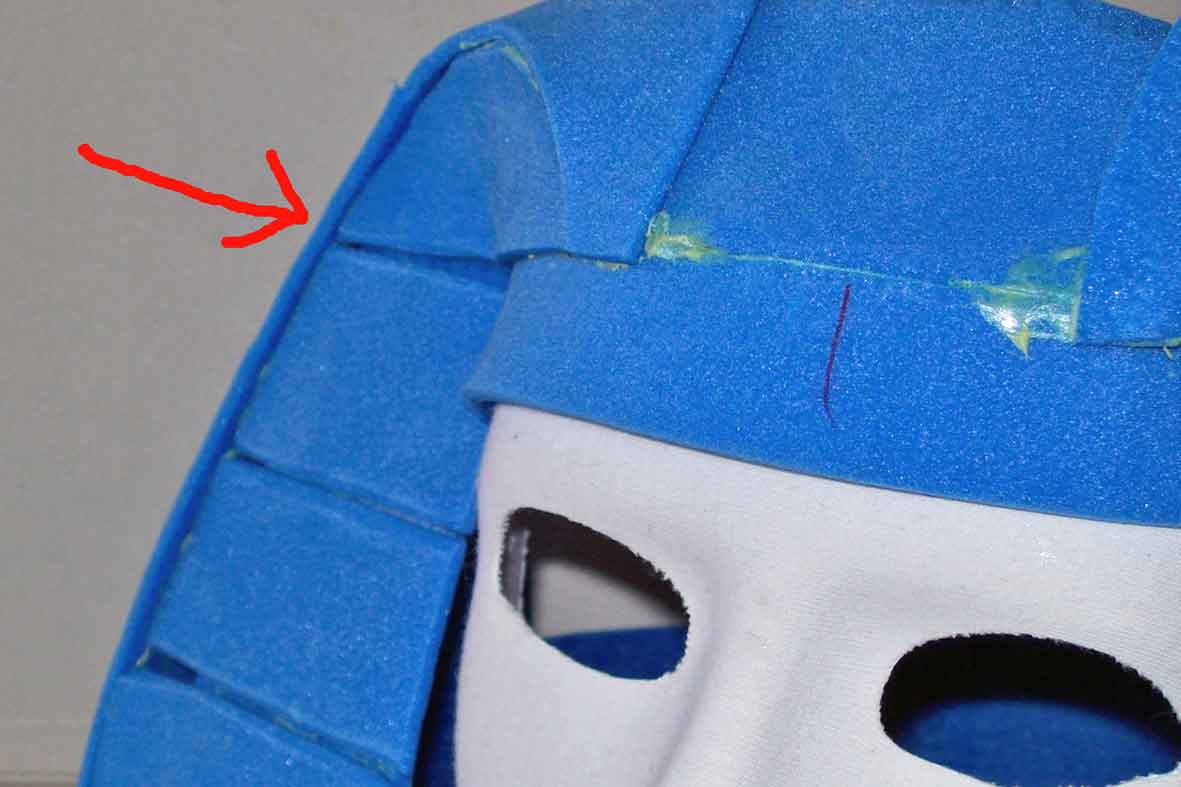 |
|||||||||||||
|
How do I achieve the superprecisely tailored fit of the parts? Glue first, then cut to final shape. |
|||||||||||||
 |
 |
||||||||||||
|
Above left: the helmet is now closed from the outside to the inside. Above right: again! an unaesthetic curve of the middle stripe! The back of the head appears intolerably “flat” (above left). This is corrected by cutting open the middle (above right), widening the opening till the shape looks ok again, then glueing on a new central stripe that holds the two “flat” halves apart. And again there is a pleasant curve of the back of the helmet. |
|||||||||||||
 |
|||||||||||||
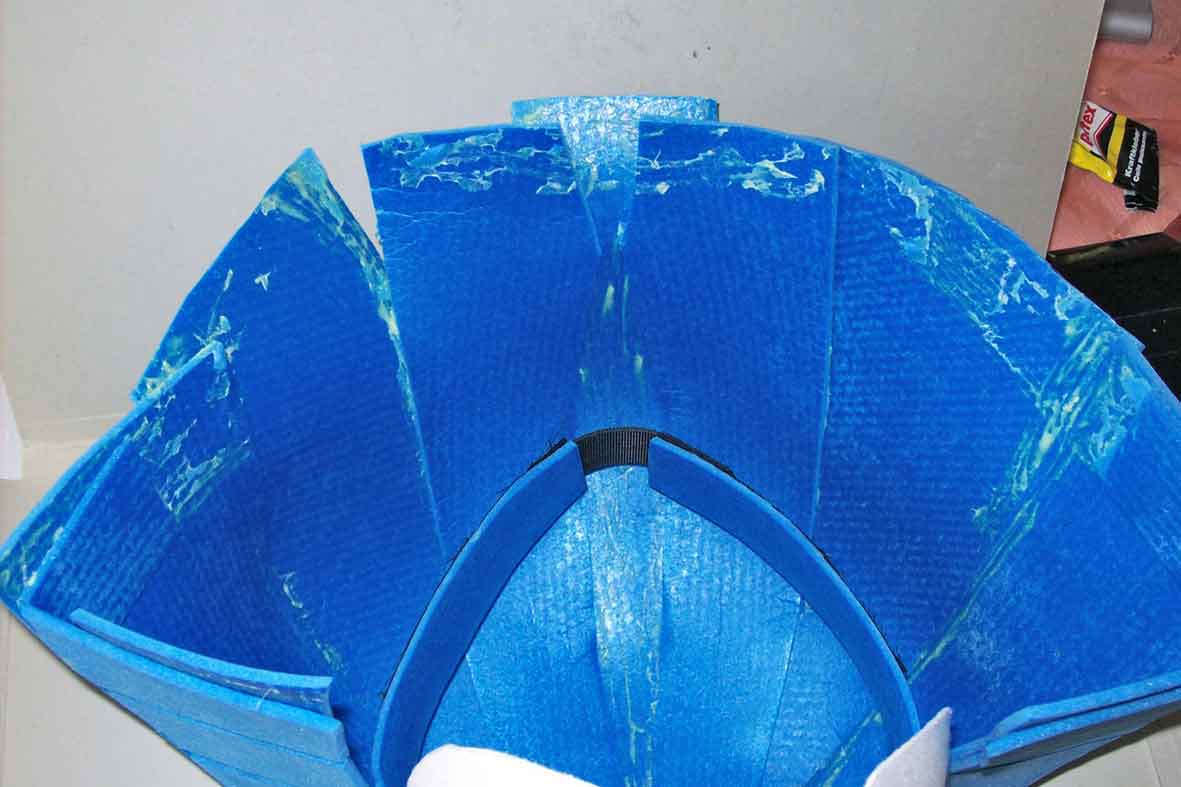 |
|||||||||||||
|
Above left: “breaking edges”. The edges of the plates are cut about 45 degrees to better harmonize with the ledges that will be glued onto the sides of each plate. Above right: view from the inside; establishing the symmetry of the helmet´s lower rim. The stripe of the original auxiliary structure has been removed and the stripes that make the helmets parts are parted, then glued together again in a way that the back of the head gets a 3- dimensional round shape. |
|||||||||||||
 |
|||||||||||||
 |
|||||||||||||
|
And there we are: the helmet is ready to be painted. Above left: The wings are in contact with the mask and “sideburns” take care of a neat blending of the white mask and the blue structure. The front peaks of the “sideburns” aren´t glued to the mask to give the impression of a helmet put onto a face. Ledges have been glued onto all sides of “plates”. The “black” stripes on the sides have been cut out and air-permeable cloth was glued in from behind as part of the helmet´s ventilation concept. An outer headband with hieroglyphs has been added above which the upper front air- intake- slot is located. This will later be disguised by a jackal´s head figurine. The surface has been treated with a soldering iron. Above right: side view. The air- intake- slots in the wings are visible. On the helmet´s back in about eye- height are the air outlets. The mask´s eyes have been widened for better vision. The holes have to be cut out until you can´t either see the openings´ lower and outer rims. |
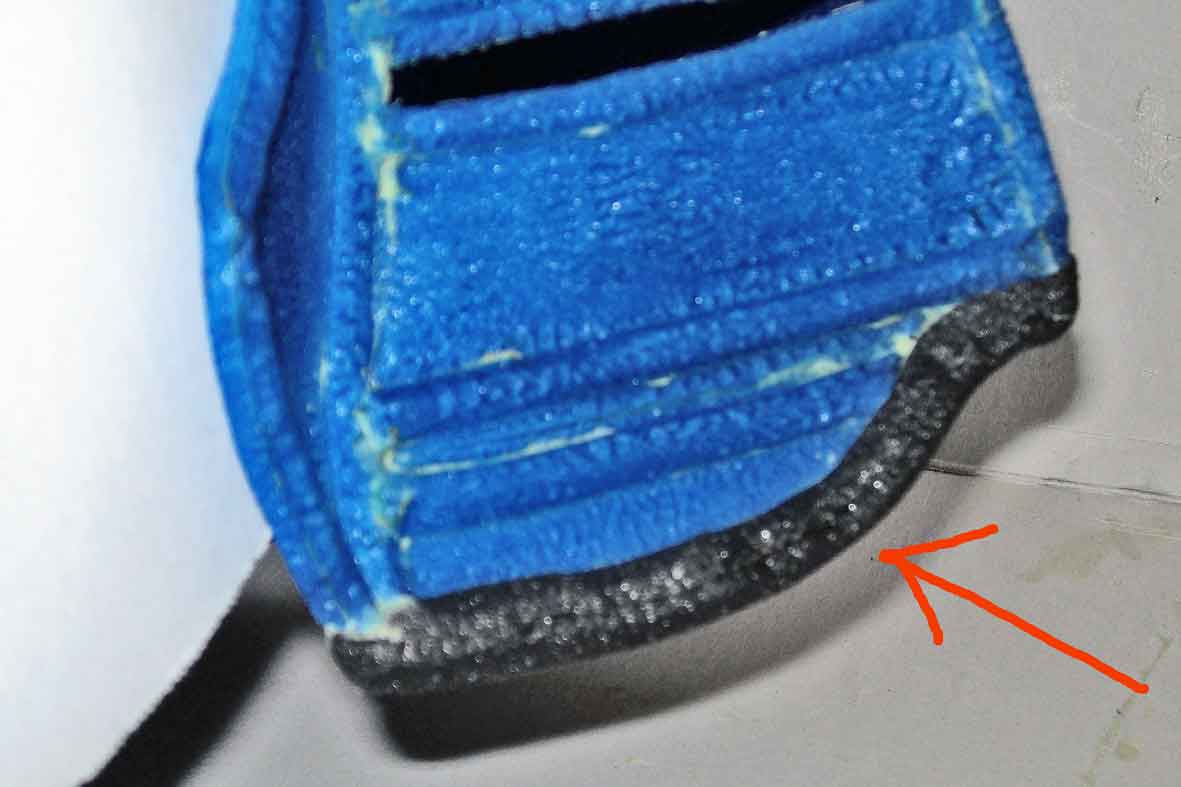 |
 |
|
Above left: zoom onto a lower hem made from black foam instead blue like the rest. This is because the lower hems are in some danger of abrasion, in which case only black will show which is much better than blue. Above right: Grounding in black acrylics. The jackal´s head figurine is attached to the headband. Contact points of helmet and head are the inner headband, brow and cortex. Everything else keeps its distance from the head and air is circulating quite freely inside. |
|
|
|
last edit oct 2016, jun 2017 |
| [Home] [Deutsch] [English] [about me] [what´s new] [Contents] [about monsters] [faqs] [other sites] |
